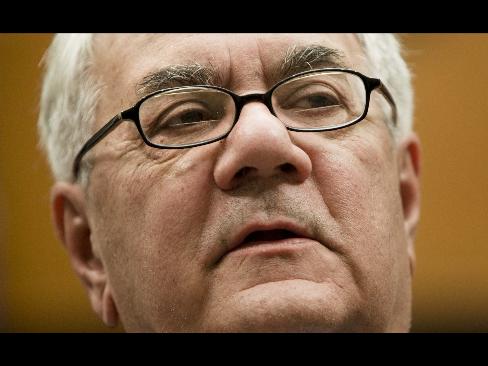Must-read! Don’t miss to take a close look at the members of the the Group of Thirty!
When Henry Paulson publishes his long-awaited memoirs, the one section that will be of most interest to readers, will be the former Goldmanite and Secretary of the Treasury’s recollection of what, in his opinion, was the most unpredictable and dire consequence of letting Lehman fail (letting his former employer become the number one undisputed Fixed Income trading entity in the world was quite predictable… plus we doubt it will be a major topic of discussion in Hank’s book). We would venture to guess that the Reserve money market fund breaking the buck will be at the very top of the list, as the ensuing “run on the electronic bank” was precisely the 21st century equivalent of what happened to banks in physical form, during the early days of the Geat Depression. Had the lack of confidence in the system persisted for a few more hours, the entire financial world would have likely collapsed, as was so vividly recalled by Rep. Paul Kanjorski, once a barrage of electronic cash withdrawal requests depleted this primary spoke of the entire shadow economy. Ironically, money market funds are supposed to be the stalwart of safety and security among the plethora of global investment alternatives: one need only to look at their returns to see what the presumed composition of their investments is. A case in point, Fidelity’s $137 billion Cash Reserves fund has a return of 0.61% YTD, truly nothing to write home about, and a return that would have been easily beaten putting one’s money in Treasury Bonds. This is not surprising, as the primary purpose of money markets is to provide virtually instantaneous access to a portfolio of practically risk-free investment alternatives: a typical investor in a money market seeks minute investment risk, no volatility, and instantaneous liquidity, or redeemability. These are the three pillars upon which the entire $3.3 trillion money market industry is based.
Yet new regulations proposed by the administration, and specifically by the ever-incompetent Securities and Exchange Commission, seek to pull one of these three core pillars from the foundation of the entire money market industry, by changing the primary assumptions of the key Money Market Rule 2a-7. A key proposal in the overhaul of money market regulation suggests that money market fund managers will have the option to “suspend redemptions to allow for the orderly liquidation of fund assets.“ You read that right: this does not refer to the charter of procyclical, leveraged, risk-ridden, transsexual (allegedly) portfolio manager-infested hedge funds like SAC, Citadel, Glenview or even Bridgewater (which in light of ADIA’s latest batch of problems, may well be wishing this was in fact the case), but the heart of heretofore assumed safest and most liquid of investment options: Money Market funds, which account for nearly 40% of all investment company assets. The next time there is a market crash, and you try to withdraw what you thought was “absolutely” safe money, a back office person will get back to you saying, “Sorry – your money is now frozen. Bank runs have become illegal.“ This is precisely the regulation now proposed by the administration. In essence, the entire US capital market is now a hedge fund, where even presumably the safest investment tranche can be locked out from within your control when the ubiquitous “extraordinary circumstances” arise. The second the game of constant offer-lifting ends, and money markets are exposed for the ponzi investment proxies they are, courtesy of their massive holdings of Treasury Bills, Reverse Repos, Commercial Paper, Agency Paper, CD, finance company MTNs and, of course, other money markets, and you decide to take your money out, well – sorry, you are out of luck. It’s the law.
A brief primer on money markets
A very succinct explanation of what money markets are was provided by none other than SEC’s Luis Aguilar on June 24, 2009, when he was presenting the case for making even the possibility of money market runs a thing of the past. To wit:
Money market funds were founded nearly 40 years ago. And, as is well known, one of the hallmarks of money market funds is their ability to maintain a stable net asset value – typically at a dollar per share.
In the time they have been around, money market funds have grown enormously – from $180 billion in 1983 (when Rule 2a-7 was first adopted), to $1.4 trillion at the end of 1998, to approximately $3.8 trillion at the end of 2008, just ten years later. The Release in front of us sets forth a number of informative statistics but a few that are of particular interest are the following: today, money market funds account for approximately 39% of all investment company assets; about 80% of all U.S. companies use money market funds in managing their cash balances; and about 20% of the cash balances of all U.S. households are held in money market funds. Clearly, money market funds have become part of the fabric by which families, and companies manage their financial affairs.
Read moreThe US Government Is Preparing For Collapse: Your Legal Right To Redeem Your Money Market Account Has Been Denied
